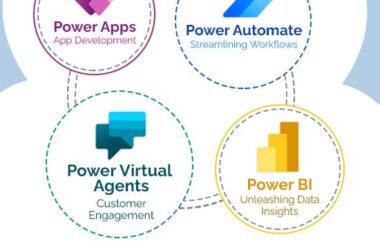Why Android?
Android is one of the most popular mobile operating systems (OS) available for smartphones and tablets, so much so that Android is currently the most used OS on mobile devices worldwide.
Undeniably more and more businesses are going towards mobile applications to grow their systems to beat a higher client base. Android is currently ruling the mobile application market, with more than 86% market share in application development.
Features of Custom Android App Development
The Android system comes with a lot of flexibility. It allows you to customize your device interface, so it is simple to use and easy to navigate. A large variety of themes, icons, fonts, and keyboards, are available to support personalization. Android comes with the following features.
- Beautiful UI: Android’s screen provides a comparatively beautiful and intuitive user interface even in its base form.
- Consistent Connectivity: GSM/EDGE, IDEN, CDMA, EV-DO, UMTS, Bluetooth, Wi-Fi, LTE, NFC, and even technologies like WiMAX & WiFi Direct, are implemented as these allow direct pairing over a high-bandwidth peer-to-peer connection.
- Massive Storage: Android’s SQLite is a lightweight relational database that is used for data storage purposes.
- All Inclusive Media support: Android outshadows all its competitors when it comes to media support, as it supports H.263, H.264, MPEG-4 SP, AMR, AMR-WB, AAC, HE-AAC, AAC 5.1, MP3, MIDI, Ogg Vorbis, WAV, JPEG, PNG, GIF, and BMP.
- Web Browser Compatibility: Android uses an open-source WebKit layout engine, coupled with Chrome’s V8 JavaScript engine that supports HTML5 and CSS3.
- Multi-Touch: Android has native support for the advanced multi-touch feature.
- Multi-Tasking: Android’s multitasking feature allows users to jump from one task to another at the same time. Various applications can run simultaneously.
- Multi-Language: Android supports both single-direction and bi-directional text across many world languages.
- Resizable Widgets: The widgets in Android are resizable, therefore users can expand them significantly to display in-depth content or shrink them to save screen space.
- Google Cloud Messaging: Google Cloud Messaging (GCM) is a service that lets developers send data in the form of short messages to their users on Android devices, without proprietary sync solutions.
- Android Beam: Android Beam is a popular NFC-based technology that lets users instantly share files and other content, merely by touching two NFC-enabled phones together.
Steps to Building a Successful App
What actually makes an app successful particularly? Some of the elements that influence and contribute to making a successful app are app performance, unique app concept, app usefulness, usability, appearance, and the engagement it brings.
Before initiating the development process, certain factors like your target audience, application features, project timeline, revenue, and maintenance budget are important to consider. Consider implementing the following tips as a part of pre-development planning.
Tip 1. Identify your audience
Tip 2. Offer value to your users
Tip 3. Define your business model
Tip 4. Define the scope of features
Tip 5. Choose the right technologies
Tip 6. Design a simple and intuitive UX/UI
Tip 7. Select your design & development team
Tip 8. Ensure your team works collectively
Tip 9. Maintain high performance
Tip 10. Ensure your app is safe
Tip 11. Provide third-party integrations
Tip 12. Plan a marketing strategy
Tip 13. Make regular updates
Tip 14. Implement changes based on feedback
Tip 15. Work on user retention
After the pre-development planning is done one should conceptualize the idea, create an interface design, develop a software prototype (MVP), and execute thorough tests on it before deploying and distributing the app. The following steps are to be followed to ensure successful app development.
- Conduct Proper Market Research
- Choose A Great App Idea
- Define a Successful App Strategy
- Designing a Catchy App
- Successful Mobile App Development
- Launch an App Successfully
- Market the Application On App Stores
- Promote Your App Successfully
- Check Your App Metrics Regularly
- Ongoing App Engagement and Support
Conclusion
Altogether through this blog, I hope to portray a clear picture of why you should choose Android to develop your brand-new app and what steps you should take to successfully build one for your business. Developing an application on the Android platform brings multiple benefits with it.
Especially with Android being the most popular and most used operating system for mobile devices, custom Android app development has become a must-choose service. To not benefit from the multiple benefits androids provide would be nothing more than a witless decision.
If you and your business are looking for custom app development services then Copperchips can be a great choice as we provide best-in-class custom android application development.








